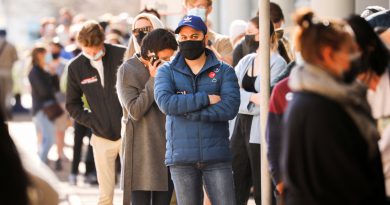Iran in 2020 and Beyond: Amidst Internal Protests and External Challenges
by Hassan Mahmoudi
The wrath of destitute Iranians as well as public discontent has turned Iran into a powder keg.
During the 20th century, Iran was cradle to two revolutions, two coup d’etats, and several economic crises. The anti-monarchy revolution that took place in the second half of the century was one of the most important phenomena in Iran’s history. But after four decades, it is clear to see that the people of Iran have never before lived under such catastrophic conditions, never been ruled with more incompetence, or by more despotic leaders than the ‘absolute rule’ of the Mullahs. The international community has never had such a criminal regime as a member.
Iran’s so-called president, Hassan Rouhani, lives and rules on lies. In his speech to the United Nations General Assembly (UNGA) on September 26, 2020, he said: “If the people want to swear at someone for the country’s problems and shortages, it is the White House in Washington D.C., no one else. Don’t name anybody else for your own group’s and faction’s benefit.” The US representative to the United Nations, Kelly Craft, responded to Rouhani exactly as he deserved: “The Iranian president’s speech today was a tour de force of dishonesty”.
A Glimpse
Namaki, the Iranian regime’s Health Minister, said: “We are facing an organized corruption in the field of medication and medical equipment even in some companies affiliated with the Health Ministry.” He added, “1.3 billion dollars of medical equipment is gone and it is not clear who has stolen it,”.
Professor Steve Hanke, economist at John Hopkins University in the USA, tweeted on September 27, 2020:
Etemand state-run daily wrote on September 27, 2020: “The poverty line for a family of four as estimated by Hamidreza Imam Qoli-Tabar, inspector for High Society of Laborers Representatives is 10 million tomans (about $357). In 2011 the poverty line was announced as around half a million tomans but in mid-spring of 2020 this figure was announced as nine million tomans by the Majlis’s (parliament) research center. The center also announced that “the income of 30 to 40 percent of Iranians is lower than this.” An 18-fold increase in 9 years is the figure before the rial constantly plunged in its value and the price of goods constantly increased.
Currently, a dollar being equal to 30,000 tomans has made the situation harder for ordinary people. Bearing in mind that the poverty line is now 10 million tomans and the minimum wage is 2.8 million tomans (about 100 dollars), one can see that the labor class, 60% of Iran’s society, is in a state of abject poverty.”
The daily also wrote: “We must be careful that the poor don’t lose their patience because then there will be social and security consequences.”
Who’s to blame?
The wealth of bodies and institutions under the control of Iran’s Supreme Leader, Ali Khamenei, is estimated at hundreds of billions of dollars. Today the majority of banks, industries, mines, communication enterprises, and financial institutions are under the exclusive ownership of Khamenei and the Islamic Revolution Guards Corps (IRGC). Each year tens of billions of dollars are drained out of the country through the mullahs’ and IRGC’s corruption and looting, being spent on the regime’s terrorism and its proxies in Iraq, Syria, Yemen, and Lebanon. This has gone so far that the United States has issued an ultimatum that it will close its embassy in Baghdad unless the regime’s proxies are brought to account for their consecutive attacks on the coalition’s embassies and convoys. According to Al-Khalij news, Iraq’s Prime
Minister, Barham Saleh has warned the commanders of the Iranian regime’s para-militia in Iraq that, if the terrorist attacks in Iraq continue, the US will act as follows:
- Physical elimination of the Shiite leaders and proxies’ commanders as it did with Qasem Soleimani and Abu-Mehdi Mohandis.
- Intense and precise air attacks against the bases of armed forces until the US is assured that these groups are demolished and their commanders either killed or on the run.
- Blocking of all assets and property registered under the name of politicians who are either involved in the attacks or are cooperating with these proxies. International courts will issue orders to prosecute them.
Where does all this lead?
Outside Iran’s borders, chaos, and utter bewilderment are seen among the commanders of the regime’s proxies. Inside the country, as a commander of the IRGC put it: “The enemy has infiltrated the heart and the mind of the youths.”
The wrath of destitute Iranians as well as public discontent has turned Iran into a powder keg. People are primed to surge into the streets with the slightest spark as they are more than fed up; eventually shaping a great revolt.
Those familiar with Iran’s situation says that, while revolt and uprising have been the way of protest in Iran before, this time will be very different. This time the people will fight back and the regime will not so easily be able to suppress the coming revolt and uprising as it has the previous ones.
Hassan Mahmoudi is a Europe-based social analyst, researcher, independent observer, and commentator of Middle Eastern and Iranian Politics. He tweets under @hassan_mahmou1.



